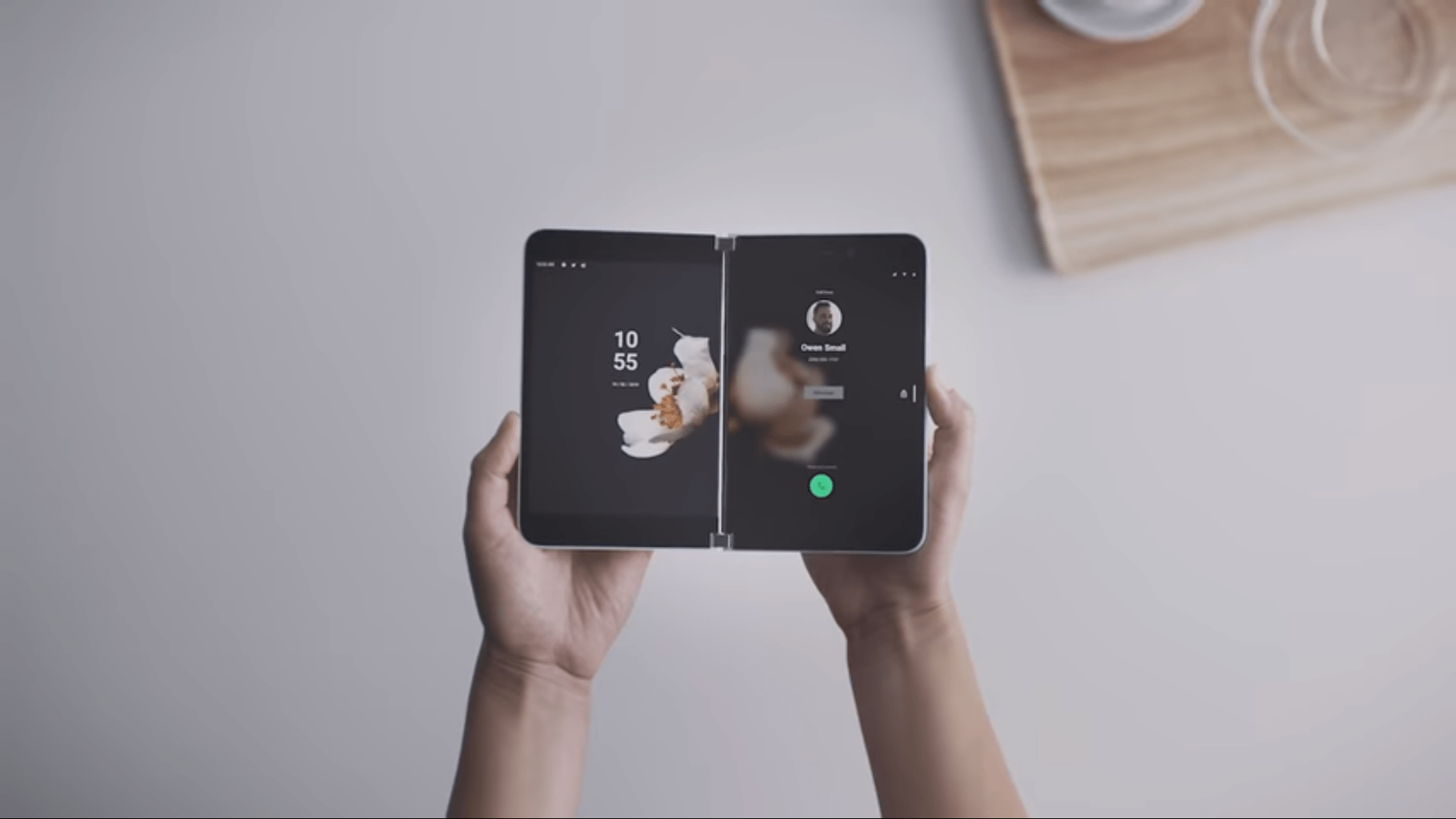After numerous failed attempts to build its own smartphone operating system, Microsoft has made peace with the fact that the smartphone world is dominated by Android and iOS. But the Redmond-based software giant still wants to be part of the smartphone revolution. After bringing its Office products and cloud services to Android and iOS devices, Microsoft has unveiled an Android-powered dual-screen smartphone called Surface Duo.
At its annual hardware event on Wednesday, Microsoft unveiled a bunch of new products including a dual-screen computer called Surface Neo, Windows 10X software for dual-screen devices, Surface Pro 7, Surface Pro X, Surface Laptop 3, and Surface Earbuds. All these are exciting products, but what really surprised the industry experts was the Surface Duo running Android.
Surface Duo is still a year away
Microsoft is not pushing its own operating system for the dual-screen smartphone. Instead, it’s using the world’s most popular platform that powers more than 2.5 billion devices across the globe. The software giant killed its in-house Windows Phone platform a couple of years ago.
The Surface Duo is a foldable phone that easily fits into your pocket. It features two 5.6-inch screens that can rotate 360 degrees around the hinge. When you unfold the phone, you get an 8.3-inch tablet-like display. Microsoft executive Yusuf Mehdi said the Surface Duo is the beginning of the dual-screen computing category.
Microsoft showed a video of people using the Surface Duo with a stylus. Its design appears to be slightly different from Samsung’s Galaxy Fold. You can use the second display as a keyboard or a game controller. It also functions as a stand, allowing you to put the device in landscape mode. You can also run two separate apps simultaneously, one on each screen.
Microsoft’s chief product officer Panos Panay said, “You can text, you can write, you can do what you want.” The company didn’t reveal much else about the product. According to Wired, the Surface Duo prototype is running Qualcomm’s Snapdragon 855 chipset, but the consumer version could be powered by a newer chipset.
The product won’t hit the store shelves until late 2020. The company is giving developers plenty of time to build apps for the dual-screen device. Microsoft didn’t reveal how much it would cost. Samsung’s Galaxy Fold has been priced at $1,980, putting it beyond the reach of most consumers. Yusuf Mehdi said the Surface Duo would have a “very good value to the price offered.”
Why Microsoft chose Android
Since the device runs Android, it will give users access to all apps in the Google Play Store. Microsoft says it brings the “best of Android” while also having the elements of Windows 10X. The Windows 10X is the new software for dual-screen computers like Surface Neo.
Over the last couple of decades, Microsoft has launched Windows CE, Windows Mobile, and Windows Phone to power smartphones, but all of them failed. It even purchased Nokia’s mobile phone division for $7.2 billion in 2014 to push the Windows Phone. At its peak, Windows Phone held a 3.6% market share in 2013 before its share started shrinking.
Only time will tell how consumers would respond to the Surface Duo. But cracking the smartphone market is not going to be easy for the Redmond company. Even Apple and Samsung have seen their market share shrink as Chinese vendors continue to sell cheap phones in greater numbers.
Microsoft’s goal with Surface Duo might not be to become the world’s leading smartphone vendor. The software giant would want to put its services on as many devices as possible. The Surface Duo could be a great choice for business users who use Microsoft Office, Outlook, Teams, OneDrive, and other productivity tools on the go.
Microsoft’s decision to opt for Android instead of its own OS would help the company bring more people into its ecosystem. The company recently launched the Your Phone app that allows you to access your phone’s photos, messages, and notifications directly from your Windows computer.





